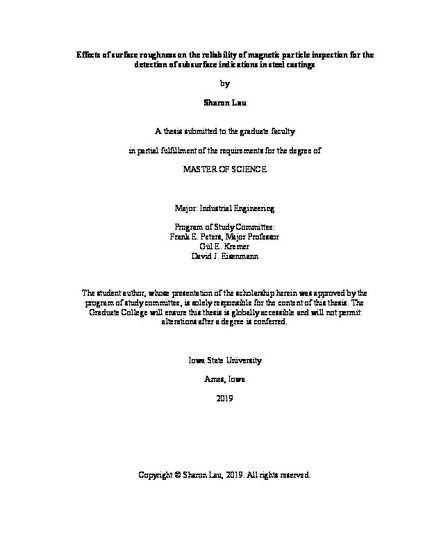
The objective of this research is to quantify the effects of surface roughness on the reliability of magnetic particle inspection (MPI) when detecting sub-surface indications. Indications in this study refer to possible defects. The reliability of MPI can be influenced by factors such as process control, part and indication characteristics, and human factors [1], [2]. Surface roughness is known to influence the effectiveness of wet MPI as rougher surfaces tend to result in particles collecting in the valleys of the surface textures which likely result in false positives [3], [4]. The surface roughness of the steel castings poses a challenge as it could increase the collection of particles when performing wet MPI. The lack of research into the influence of surface roughness on wet MPI has led to the need for this research. Three sets of experimental designs were developed. Firstly, particle collection due to surface roughness was tested using samples containing three levels of surface textures where a metric for the accumulation of fluorescent particles was developed by obtaining a value to represent the average green intensity. Next, the noise area percentage caused by four levels of surface roughness with a common sub-surface indication was tested. Noise area percentage in this study was determined by the percentage of pixels surrounding the indication which have higher green intensity compared to the average green intensity of the indication. This experiment was conducted to evaluate the relationship between noise area percentage and surface roughness when testing for a fixed discontinuity. Noise area percentage is a metric to determine the level of difficulty in identifying an indication. The higher noise area percentage, the harder it is to identify an indication. Lastly, the effect of surface roughness compared to depth and diameter with regards to the influence it has on the response variable (noise area percentage) was evaluated. This research will provide a quantifiable method for the effects caused by factors that were not available prior to this study. Additionally, a better understanding of the impacts surface roughness have on the effectiveness of wet MPI was achieved through this investigation.
Available at: http://works.bepress.com/sharon-lau/7/
